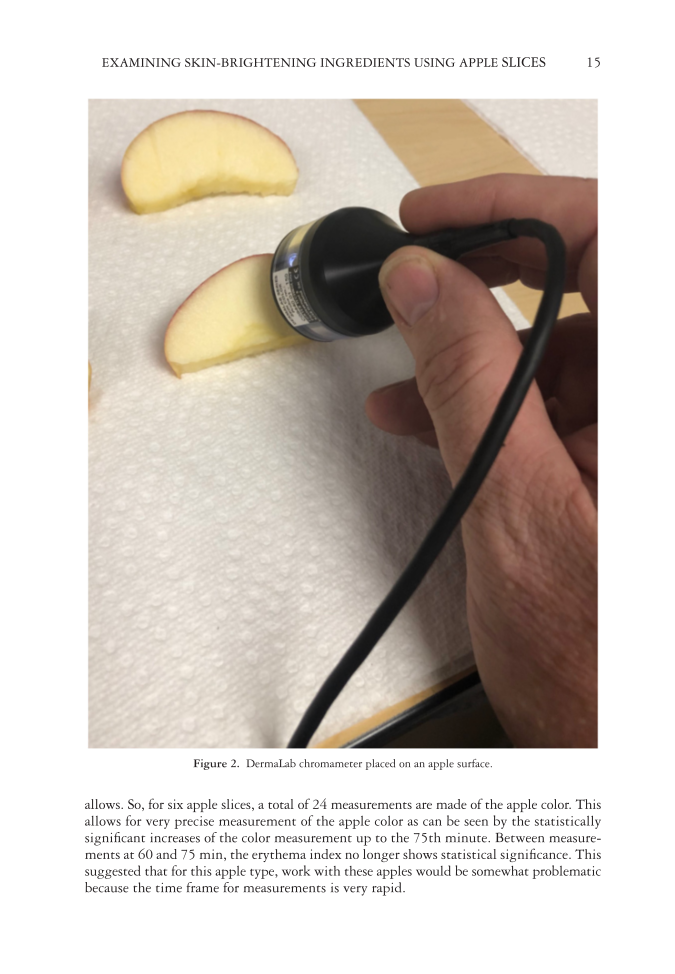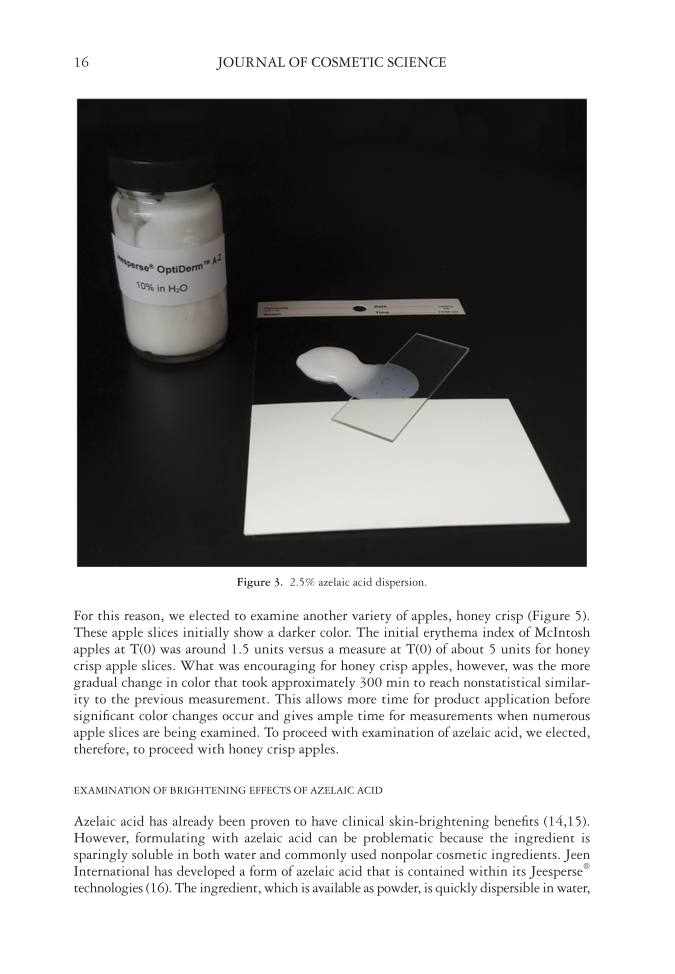EXAMINING SKIN-BRIGHTENING INGREDIENTS USING APPLE SLICES 15 allows. So, for six apple slices, a total of 24 measurements are made of the apple color. This allows for very precise measurement of the apple color as can be seen by the statistically signifi cant increases of the color measurement up to the 75th minute. Between measure- ments at 60 and 75 min, the erythema index no longer shows statistical signifi cance. This suggested that for this apple type, work with these apples would be somewhat problematic because the time frame for measurements is very rapid. Figure 2 . DermaLab chromameter placed on an apple surface.
JOURNAL OF COSMETIC SCIENCE 16 For this reason, we elected to examine another variety of apples, honey crisp (Figure 5). These apple slices initially show a darker color. The initial erythema index of McIntosh apples at T(0) was around 1.5 units versus a measure at T(0) of about 5 units for honey crisp apple slices. What was encouraging for honey crisp apples, however, was the more gradual change in color that took approximately 300 min to reach nonstatistical similar- ity to the previous measurement. This allows more time for product application before signifi cant color changes occur and gives ample time for measurements when numerous apple slices are being examined. To proceed with examination of azelaic acid, we elected, therefore, to proceed with honey crisp apples. EXA MINATION OF BRIGHTENING EFFECTS OF AZELAIC ACID Aze laic acid has already been proven to have clinical skin-brightening benefi ts (14,15). However, formulating with azelaic acid can be problematic because the ingredient is sparingly soluble in both water and commonly used nonpolar cosmetic ingredients. Jeen International has developed a form of azelaic acid that is contained within its Jeesperse® technologies (16). The ingredient, which is available as powder, is quickly dispersible in water, Figure 3 . 2.5% azelaic acid dispersion.
Purchased for the exclusive use of nofirst nolast (unknown) From: SCC Media Library & Resource Center (library.scconline.org)


























































